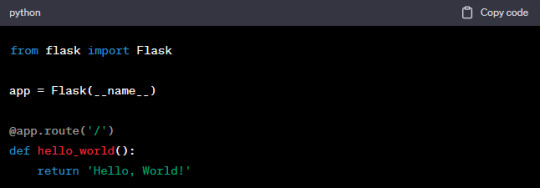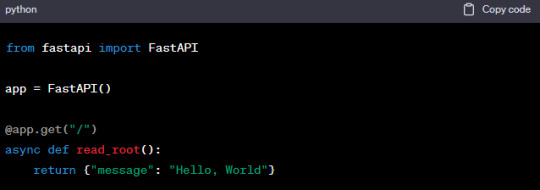#API and Web Testing
Explore tagged Tumblr posts
Text
CI/CD Pipeline Integration: Streamline Software Delivery with Assure QA
In today’s fast-paced development world, CI/CD Pipeline Integration is essential for seamless, automated software delivery. By integrating continuous testing and deployment, businesses can accelerate releases while maintaining quality.
Assure QA is the ultimate online platform for software quality assurance, offering functional, automation, performance, and security testing. With cutting-edge tools, Assure QA ensures robust, high-performing software, tailored to your needs. Whether it's web, API, or cross-browser testing, Assure QA empowers teams with reliable, scalable solutions.
Optimize your CI/CD workflow with Assure QA—where innovation meets reliability!


#CI/CD Pipeline Integration#DevOps Automation#Automated Testing Tools#API and Web Testing#Software Quality Assurance#Cross-Browser Compatibility Testing
1 note
·
View note
Text
Breaking Barriers and Unlocking Testing Efficiency
Software testing is often seen as a bottleneck in the development process—but it doesn’t have to be. Breaking traditional testing barriers involves rethinking outdated processes, embracing automation, and aligning QA with agile and DevOps practices. By doing so, organizations can unlock new levels of testing efficiency and speed up delivery without sacrificing quality.
One major barrier is manual testing dependency, which slows down releases and limits scalability. Introducing test automation—especially with tools that support low-code or codeless automation—can streamline repetitive tasks and free testers to focus on exploratory and strategic testing.
Another challenge is siloed teams and poor communication. Integrating QA early into the SDLC (Shift Left Testing) and fostering collaboration across development, testing, and product teams significantly improves test coverage and reduces rework.
Modern testing also leverages continuous testing, where automated web testing are executed as part of the CI/CD pipeline, providing fast feedback and ensuring every build is production-ready.
In short, breaking down organizational, technological, and process-based barriers is key to boosting efficiency. By embracing smarter tools, tighter integration, and a proactive QA mindset, companies can transform testing from a blocker into a true enabler of innovation and speed.
#automation testing#test automation tools#test automation software#automation tools#qa automation tools#ai testing tools#testing tools#software testing tools#api testing#qa automation testing#no code test automation#ai test automation#automated web testing
0 notes
Text
The Importance of API and Web Services Testing for Quality Assurance
In today’s fast-paced digital world, ensuring the quality and performance of applications is paramount. As businesses increasingly rely on complex applications and interconnected systems, effective testing becomes crucial. One key aspect of this is API and web services testing, which is essential for verifying the functionality, security, and performance of web-based services and application programming interfaces (APIs). Let’s explore why these testing services are critical, and highlight the best app testing services, QA testing services, and companies that can help streamline this process.
What is API and Web Services Testing?
APIs and web services enable different applications to communicate with each other, allowing data exchange and interaction across platforms. API and web services testing is conducted to ensure that these systems function correctly, efficiently, and securely. This type of testing focuses on checking the integration points between systems, verifying data transmission, and ensuring compliance with expected standards and protocols.
Without thorough API and web services testing, businesses run the risk of encountering integration failures, data discrepancies, or security vulnerabilities. Therefore, implementing robust testing practices is a must to avoid such issues.
Best App Testing Services
When looking for reliable app testing services, businesses should focus on companies that offer comprehensive test plans, including functional testing, compatibility testing, and performance testing. These services should cater to both mobile apps and web-based applications to ensure an all-encompassing approach to quality assurance.
App testing involves evaluating mobile applications on various platforms, devices, and operating systems to confirm that the app performs as expected. Top-tier mobile app testing companies provide services that cover everything from UI/UX testing to performance optimization, ensuring a seamless user experience.
QA Testing Services Companies
A reputable QA testing services company provides a range of services aimed at improving the quality of software through systematic testing. They offer a structured approach to identifying defects, improving functionality, and ensuring applications meet business requirements. Leading QA testing vendors employ the latest testing methodologies, including automated testing, to reduce manual errors and improve testing efficiency.
A trusted QA vendor can help businesses with software performance testing, which is particularly essential for ensuring that an application runs smoothly under different loads, without crashing or degrading in performance.
The Role of Web Service Testing
In addition to API testing, web service testing plays a pivotal role in ensuring that online services function as expected. Web services serve as a foundation for many modern applications, providing essential backend support for operations like user authentication, data retrieval, and payment processing. Testing these services ensures they are secure, reliable, and capable of handling the expected traffic.
Web service testing focuses on validating the protocols used in web communications, including REST, SOAP, and HTTP. This testing evaluates functionality, reliability, security, and performance, ensuring web services meet the desired standards for reliability and scalability.
Why Choose a QA Testing Vendor?
Choosing a reliable QA testing vendor is crucial for maintaining the quality of your software applications. A skilled vendor will conduct thorough testing to identify potential issues before they affect users. Many QA testing services companies offer end-to-end testing solutions, from functional testing to security testing and stress testing. By outsourcing testing, businesses can focus on their core operations while leaving the quality assurance to the experts.
Conclusion
In an era where software quality directly impacts business success, investing in API and web services testing is more important than ever. Whether it's for mobile apps, websites, or backend services, comprehensive testing ensures that applications work efficiently, securely, and offer a seamless experience to users. Partnering with leading QA testing services companies and mobile app testing companies guarantees that your software will perform at its best, helping your business stay ahead of the competition in a fast-evolving digital landscape.
0 notes
Text

How to Balance Fixing Performance Issues and Adding New Features in Web Applications?
In today’s digital landscape, web applications are essential for business operations, marketing, and consumer involvement. As organizations expand and consumer expectations rise, development teams are frequently confronted with the difficult task of balancing two key priorities: addressing performance issues and introducing new features.
While boosting performance improves the user experience and increases efficiency, new features are required to remain competitive and meet market demands. Prioritizing one over the other, on the other hand, might have negative consequences—performance concerns can lead to a poor user experience while failing to innovate can result in a competitive disadvantage.
This blog delves into how to balance improving performance and introducing new features to web apps, allowing firms to satisfy technical and market demands efficiently.
Why Balancing Performance and New Features Is Crucial
A web application‘s success depends on both its performance and its features. However, relying entirely on one might result in imbalances that impair both user happiness and business progress.
Performance:Performance is an important component that directly influences user retention and happiness. Users can become frustrated and leave if the application has slow loading times, crashes, or problems. Ensuring that your web application runs smoothly is essential since 53% of mobile consumers would quit a site that takes more than three seconds to load.
New Features:On the other hand, constantly adding new features keeps users interested and promotes your company as innovative. New features generate growth by attracting new consumers and retaining existing ones who want to experience the most recent changes.
The dilemma is deciding when to prioritize bug fixes over new feature development. A poor balance can harm both performance and innovation, resulting in a subpar user experience and stagnation.
Common Performance Issues in Web Applications
Before balancing performance and features, it’s important to understand the common performance issues that web applications face:
Slow Load Times: Slow pages lead to higher bounce rates and lost revenue.
Server Downtime: Frequent server outages impact accessibility and trust.
Poor Mobile Optimization: A significant portion of web traffic comes from mobile devices and apps that aren’t optimized for mobile fail to reach their potential.
Security Vulnerabilities: Data breaches and security flaws harm credibility and user trust.
Bugs and Glitches: Software bugs lead to poor user experiences, especially if they cause the app to crash or become unresponsive.
Strategic Approaches to Fixing Performance Issues
When performance issues develop, they must be handled immediately to guarantee that the online application functions properly. Here are techniques for improving performance without delaying new feature development:
Prioritize Critical Issues:Tackle performance issues that have the most significant impact first, such as slow loading times or security vulnerabilities. Use analytics to identify bottlenecks and determine which areas require urgent attention.
Use a Continuous Improvement Process:Continuously monitor and optimize the application’s performance. With tools like Google PageSpeed Insights, you can track performance metrics and make incremental improvements without major overhauls.
Optimize Database Queries:Slow database queries are one of the leading causes of web app performance issues. Optimize queries and ensure that the database is indexed properly for faster access and retrieval of data.
Reduce HTTP Requests:The more requests a page makes to the server, the slower it loads. Minimize requests by reducing file sizes, combining CSS and JavaScript files, and utilizing caching.
5. Leverage Caching and CDNs: Use caching strategies and Content Delivery Networks (CDNs) to deliver content quickly to users by storing files in multiple locations globally.
Why Adding New Features is Essential for Growth
In the rapidly changing digital environment, businesses must continually innovate to stay relevant. Adding new features is key to maintaining a competitive edge and enhancing user engagement. Here’s why:
User Expectations:Today’s consumers expect personalized experiences and constant innovation. Failure to add new features can lead to customer churn, as users may feel your web application no longer meets their needs.
Market Differentiation:Introducing new features allows your application to stand out in the marketplace. Unique functionalities can set your app apart from competitors, attracting new users and increasing customer loyalty.
Increased Revenue Opportunities:New features can lead to additional revenue streams. For example, adding premium features or new integrations can boost the app’s value and lead to increased sales or subscription rates.
4. Feedback-Driven Innovation: New features are often driven by user feedback. By continuously developing and adding features, you create a feedback loop that improves the overall user experience and fosters customer satisfaction.
Read More: https://8techlabs.com/how-to-balance-fixing-performance-issues-and-adding-new-features-in-web-applications-to-meet-market-demands-and-enhance-user-experience/
#8 Tech Labs#custom software development#custom software development agency#custom software development company#software development company#mobile app development software#bespoke software development company#bespoke software development#nearshore development#software development services#software development#Website performance testing tools#Speed optimization for web apps#Mobile-first web app optimization#Code minification and lazy loading#Database indexing and query optimization#Agile vs Waterfall in feature development#Feature flagging in web development#CI/CD pipelines for web applications#API performance optimization#Serverless computing for better performance#Core Web Vitals optimization techniques#First Contentful Paint (FCP) improvement#Reducing Time to First Byte (TTFB)#Impact of site speed on conversion rates#How to reduce JavaScript execution time#Web application performance optimization#Fixing performance issues in web apps#Web app performance vs new features#Website speed optimization for better UX
0 notes
Text
https://nyuway.com/why-ptaas-is-a-game-changer-for-your-cybersecurity/

#Dynamic Application Security Testing (DAST)#Web Application DAST#API Security DAST#Penetration Testing as a Service (PTaaS)#Vulnerability Assessment and Penetration Testing (VA PT)
0 notes
Text
Top Tools for Web Development in 2025
Web development is an ever-evolving field, requiring developers to stay updated with the latest tools, frameworks, and software. These tools not only enhance productivity but also simplify complex development processes. Whether you’re building a small business website or a complex web application, having the right tools in your toolkit can make all the difference. Here’s a rundown of the top…

View On WordPress
#Angular Framework#API Development Tools#Back-End Development Tools#Best Tools for Web Development 2024#Bootstrap for Responsive Design#Django Python Framework#Docker for Deployment#Front-End Development Tools#GitHub for Developers#Laravel PHP Framework#Modern Web Development Tools#Node.js Back-End Framework#Popular Web Development Software#React Development#Tailwind CSS#Testing and Debugging Tools#Vue.js for Web Development#Web Development Frameworks
0 notes
Text
Web Application Penetration Testing
Blacklock offers web application penetration testing to help businesses ensure the security of their applications. This service includes identifying and exploiting vulnerabilities in web applications, APIs, and mobile applications. Our API penetration testing helps to improve application security by simulating real-world attacks and identifying weaknesses before they can be exploited by malicious actors. Contact Blacklock Security to enhance your web application security and get it work smoothly.
0 notes
Text
Best Practices for Setting up a Test Bed
Setting up an effective test bed necessitates a thorough grasp of the testing needs. This includes gathering and prioritizing needs, assessing limitations, and documenting specifications.
Verifying the best automation testing tool for web applications connection is critical for ensuring that the components communicate well with one another. Conduct connection tests to check that the network configurations are correct, and that the hardware and software components function together seamlessly.
This entails validating the availability and installation of multiple browsers, including Chrome, Firefox, Safari, and Edge, as well as their versions. To ensure backward compatibility, start with a lower version of the browser and subsequently update to the most recent version.
0 notes
Text
Top Machine Learning Libraries In Java
Java is the only general purpose programming language which finds wide use by developers for building secure enterprise grade applications, desktop applications, web applications, and mobile apps. Java 9 further helps developers to build applications for both large and small devices by providing a number of new features – a new module system, a new command line tool, and several updated APIs. At the same time, Java is currently one of the most popular programming languages for machine learning.

A large percentage of data scientists and machine learning developers prefer Java to other programming languages while improving network security, protect cyber attacks, and detect frauds. The language features available in Java makes it easier for programmers to write machine learning algorithms. The developers can accelerate custom machine learning application development by taking advantage of the Machine Learning libraries In Java.
Brief Overview of 10 Robust Machine Learning Libraries In Java
1) Java Machine Learning Library (Java-ML)
Java-ML is designed as a collection of machine learning algorithms. It even provides interface for various types of machine learning algorithms. By design, the library is a clear interface instead of graphical user interface. Hence, only skilled Java programmers and developers are able to use it . They have option to learn Java-ML by referring to its well-documented source code as well as tutorials and code samples.
2) Java Statistical Analysis Tool (JSAT)
The Java library for machine learning was developed by Edward Raff for self-education. JSAT still provides implementation of standard machine learning algorithms in pure Java. The developers can even use JSAT as a lightweight Java library without external dependencies. But they cannot use the library to solve complex machine learning project. JSAT still helps machine learning developers to sole small to medium size problems quickly.
3) Waikato Environment for Knowledge Analysis (Weka)
The machine learning algorithms provided by Weka helps developers to simplify a variety of data mining tasks. Weka even provides a number of tools for data pre-processing, classification, clustering, regression, and visualization. The developers even have option to use the machine learning algorithms provided by Weka to a dataset directly or call the algorithms from Java code. At the same time, the developers can also use Weka to create new machine learning schemas without putting extra time and effort.
4) Konstanz Information Miner (KNIME)
KNIME was originally an analytics and reporting library. But KNIME is currently one of the most popular build software for advanced data science. The tools provided by KNIME help users to discover new potential hidden in data, mine data for fresh insights, and predict new future. The data scientists can use KNIME to integrate different types of data collected from various sources to widely used tools. At the same time, the software developers can use KNIME to connect applications to data sources by creating custom connectors, implement new algorithms, and create new data visualization.
5) Environment for DeveLoping KDD-Applications Supported by Index-Structures (ELKI)
The open source data mining software is written in Java programming language. But it is compiled with Python and Maven. Despite being designed as research software, ELKI is designed based on extensions. It allows developers to use algorithms, indexes, visualization, data types, and distance functions as extensions. However, ELKI allows developers to keep the data management tasks and data mining algorithms separated. The separation further makes it easier for programmers to evaluate data mining algorithms and data management tasks independently.
6) RapidMiner
The commercial data science platform is currently being used by large enterprises like Samsung, GE, SalesForce, Cisco, Hitachi and Siemens. RapidMiner comes with a set of features and tools to simplify various tasks performed by data scientists. It even uses automated machine learning to speed up and simplify various data science projects. The data scientists can use RapidMiner Studio to create visual workflow, RapidMiner Server to simplify model deployment and management, and RapidMiner Radoop to implement code free data science.
7) Massive Online Analysis (MOA)
The widely used data stream mining framework comes with a number of machine learning algorithms and tools to evaluate the algorithms. While using MOA, developers can avail a variety of machine learning algorithms – classification, clustering, regression, concept drift detection, outlier detection, and recommender system. The developers can use MOA to perform real-time big data streaming and large scale machine learning. They even have option to extend and scale the Java-based framework to meet complex project needs.
8) Eclipse Deeplearning4j
Deeplearning4j is a Java based platform. The distributed deep learning library is compatible with a number of JVM-based programming languages – Kotlin, Scala and Clojure. Also, Deeplearning4j finds extensive use as a scalable and open source distribution library in varied business environments on distributed CPUs and GPUs. It even features micro-service architecture and takes advantage of a robust distributed computing framework like Hadoop. The developers can even avail the tools provided by Deeplearning4j to perform machine learning ETL operations, evaluate machine learning algorithms, and integrate Java and native C++.
9) Mallet
Mallet is designed as a Java-based package for a variety of machine learning applications to text. The sophisticated tools available in Mallet make it easier for developers to simplify document classification, sequence tagging, topic modelling, and numerical optimization. At the same time, Mallet transforms text documents into numerical representation efficiently and flexibly through a system of pipes. The user can even extend Mallet through add-on packages to meet complex project needs.
10) Encog Machine Learning Framework
In addition to supporting advanced machine learning algorithms, Encog also supports classes for data normalization and processing. The framework further provides multi-threaded training algorithms that can scale according to multicore hardware. Encog makes it easier for programmers to model and train machine learning algorithms by providing a GUI-based workbench. It supports an array of standard machine learning algorithms including neural networks, genetic programming, Bayesian networks, hidden Markov models, and support vector machine.
On the whole, the Java developers have option to choose from a wide range of Java libraries for machine learning. Some of these libraries are machine learning development platforms, whereas others provide a collection of machine learning algorithms. Hence, the developers must keep in mind the precise needs of each project while comparing these widely used machine learning libraries for Java programming language.
#software development#software testing#api testing services#python developers#php web development#python development company#python
0 notes
Text
Manual QA Essentials: A Practical Guide to Tools for Successful Testing
In the dynamic landscape of software development, manual quality assurance (QA) testing plays a pivotal role in delivering reliable and user-friendly applications. This step-by-step guide will walk you through the process of conducting effective manual QA testing using essential software tools to ensure the highest level of software quality. Get More Details.
1 note
·
View note
Text
Future of Automation: Trends and Predictions 2025
As we step into 2025, automation continues to redefine the software testing landscape. The future is not just about faster execution—it's about intelligent, adaptive testing that keeps pace with rapid digital transformation.
One major trend is the rise of AI and machine learning in test automation. AI-driven tools are enabling smart test case generation, self-healing scripts, and predictive defect analysis. This shift reduces manual effort and accelerates time-to-market.
No-code test automation is also gaining momentum, empowering non-technical testers to contribute to automation efforts and shortening the skill gap in QA teams. Meanwhile, hyperautomation—the combination of RPA, AI, and testing—promises end-to-end workflow automation beyond just software testing.
The adoption of cloud-based and containerized test environments is growing, enabling parallel and scalable testing across devices and platforms. Tools like Docker and Kubernetes are becoming essential for modern test orchestration.
Lastly, with DevOps and agile at the core, continuous testing in CI/CD pipelines is becoming the new standard. Organizations that integrate testing earlier and more intelligently will lead in speed and quality.
In 2025, success in QA will come to those who embrace smart automation, flexible frameworks, and a data-driven mindset.
#automation testing#test automation software#qa automation tools#ai testing tools#api testing#qa automation testing#codeless test automation#web automation tools#codeless automation#ai automation testing
0 notes
Text

Click here to read more about this.
0 notes
Text
If you need any help in the integration of HotesPro API, then feel free to contact us our expert developers are always ready to help you with the integration of any API or custom web development for you.
0 notes
Text
https://nyuway.com/why-ptaas-is-a-game-changer-for-your-cybersecurity/
0 notes
Text
Python Web Development: Unleashing the Power of Python for Your Web Projects

In the ever-evolving world of web development, Python has emerged as a powerhouse. This versatile programming language has gained immense popularity for its simplicity, readability, and an extensive ecosystem of libraries and frameworks. Whether you're a seasoned developer or just getting started, Python web development offers a wealth of opportunities. In this article, we'll dive deep into Python web development, exploring its benefits, tools, frameworks, and how it can drive success for your web projects.
Table of Contents
Why Python for Web Development?
Python Web Development Tools
Python Web Frameworks
Django
Flask
FastAPI
Python and Front-End Technologies
Python Web Development Best Practices
Conclusion
1. Why Python for Web Development?
When it comes to choosing a programming language for web development, Python offers several compelling reasons:
Readability: Python's clean and easy-to-read syntax reduces the chances of coding errors and makes collaboration between developers seamless.
Versatility: Python is a general-purpose language, which means it can be used for a wide range of applications, including web development.
Large Community: Python boasts a vast and active community of developers who contribute to its growth and maintain numerous libraries and frameworks.
Robust Frameworks: Python web development is well-supported by powerful frameworks like Django, Flask, and FastAPI, which simplify development and save time.
Scalability: Python's versatility allows for both small-scale projects and large, complex web applications.
2. Python Web Development Tools
Before diving into Python web frameworks, let's explore some essential tools that facilitate the development process:
Integrated Development Environments (IDEs)
PyCharm: Developed by JetBrains, PyCharm is a popular Python IDE known for its robust features, code analysis, and integration with popular Python web frameworks.
Visual Studio Code (VSCode): A lightweight, open-source code editor, VSCode offers excellent support for Python development through extensions.
Package Managers
pip: The default package manager for Python, pip makes it easy to install, update, and manage Python packages and dependencies.
Version Control Systems
Git: Git is essential for tracking changes in your codebase, collaborating with other developers, and managing code versions.
Database Management
SQLAlchemy: A powerful and flexible SQL toolkit and Object-Relational Mapping (ORM) library that simplifies database interaction.
API Development
Swagger UI: A tool for designing, building, and documenting RESTful APIs, which can be seamlessly integrated with Python web applications.
3. Python Web Frameworks
Python's true potential in web development shines through its frameworks. Let's explore some of the most popular ones:
3.1 Django
https://www.example.com/django-image.jpg
Django, known as "The Web framework for perfectionists with deadlines," is a high-level Python web framework that prioritizes clean and pragmatic design. It follows the "batteries-included" philosophy, offering a wide range of built-in features for rapid development.
Key Features of Django:
Admin Interface: Django's admin panel provides a ready-made interface for managing application data, which is a huge time-saver during development.
ORM (Object-Relational Mapping): Django's ORM simplifies database management by allowing developers to work with Python objects instead of SQL queries.
Security: Django takes security seriously and provides built-in protection against common web vulnerabilities like SQL injection and cross-site scripting (XSS).
Scalability: While Django is suitable for small projects, it can also handle large and complex applications when properly optimized.
Sample Code Snippet (Creating a Simple Model):
pythonCopy code

3.2 Flask
https://www.example.com/flask-image.jpg
Flask is a lightweight and micro web framework for Python. It's often referred to as a "micro" framework because it doesn't come with as many built-in features as Django, giving developers more flexibility to choose components and libraries.
Key Features of Flask:
Simplicity: Flask's simplicity allows developers to start coding quickly without a steep learning curve.
Extensibility: Flask encourages the use of extensions to add functionality as needed, which keeps the core framework lightweight.
RESTful API Support: Flask is an excellent choice for building RESTful APIs, making it popular among developers working on microservices.
Werkzeug and Jinja2: Flask relies on the Werkzeug WSGI toolkit and Jinja2 templating engine, which are well-documented and widely used.
Sample Code Snippet (Creating a Simple Route):
pythonCopy code

3.3 FastAPI
https://www.example.com/fastapi-image.jpg
FastAPI is a modern, fast (high-performance), web framework for building APIs with Python 3.7+ based on standard Python type hints. It is designed to be easy to use and learn, while also providing automatic interactive documentation.
Key Features of FastAPI:
Automatic Documentation: FastAPI automatically generates interactive documentation (Swagger UI and ReDoc) for your API, making it easy to understand and test.
Type Hints: It uses Python type hints for request and response validation, reducing the chances of runtime errors.
Async Support: FastAPI is designed to work asynchronously, which can lead to significant performance improvements for I/O-bound operations.
Security: FastAPI includes built-in security features to help protect your API, such as authentication and authorization tools.
Sample Code Snippet (Creating an API Endpoint):
pythonCopy code

4. Python and Front-End Technologies
Python isn't limited to the back-end; it can also be used for front-end development with the help of tools and libraries like:
Django Templates: Django includes a powerful templating engine that allows developers to create dynamic front-end interfaces.
JavaScript Integration: Python can be used in conjunction with JavaScript frameworks like React or Vue.js to build interactive and responsive front-end applications.
WebAssembly (Wasm): Python can be compiled to WebAssembly, enabling the execution of Python code directly in the browser.
5. Python Web Development Best Practices
To ensure the success of your Python web development projects, follow these best practices:
Code Organization
Maintain a clean and organized project structure to make it easier for other developers to collaborate.
Use version control (e.g., Git) to track changes and collaborate effectively.
Security
Stay updated with security best practices and apply them to your web applications.
Regularly patch and update dependencies to mitigate security vulnerabilities.
Performance
Optimize your code and database queries for performance to ensure your web application runs smoothly, especially under heavy loads.
Use caching mechanisms to reduce server load and response times.
Documentation
Document your code and APIs thoroughly to make it easier for other developers to understand and use your work.
Generate automatic documentation when using frameworks like FastAPI.
Testing
Implement unit and integration tests to catch bugs early in the development process.
Use continuous integration (CI) tools to automate testing and deployment processes.
6. Conclusion
Python web development has taken the digital world by storm, offering a powerful and flexible platform for building web applications of all sizes and complexities. Whether you choose Django for its robustness, Flask for its simplicity, or FastAPI for its modernity, Python provides a wide range of tools and frameworks to suit your development needs.
As you embark on your Python web development journey, remember to follow best practices, stay updated with the latest trends, and embrace the vibrant Python community. With Python's versatility and your expertise, you'll be well-equipped to lead successful web development projects and drive growth for your business.
If you're ready to leverage the power of Python web development for your next project, contact us today. Our team of experienced Python developers is here to help you turn your ideas into reality.
0 notes